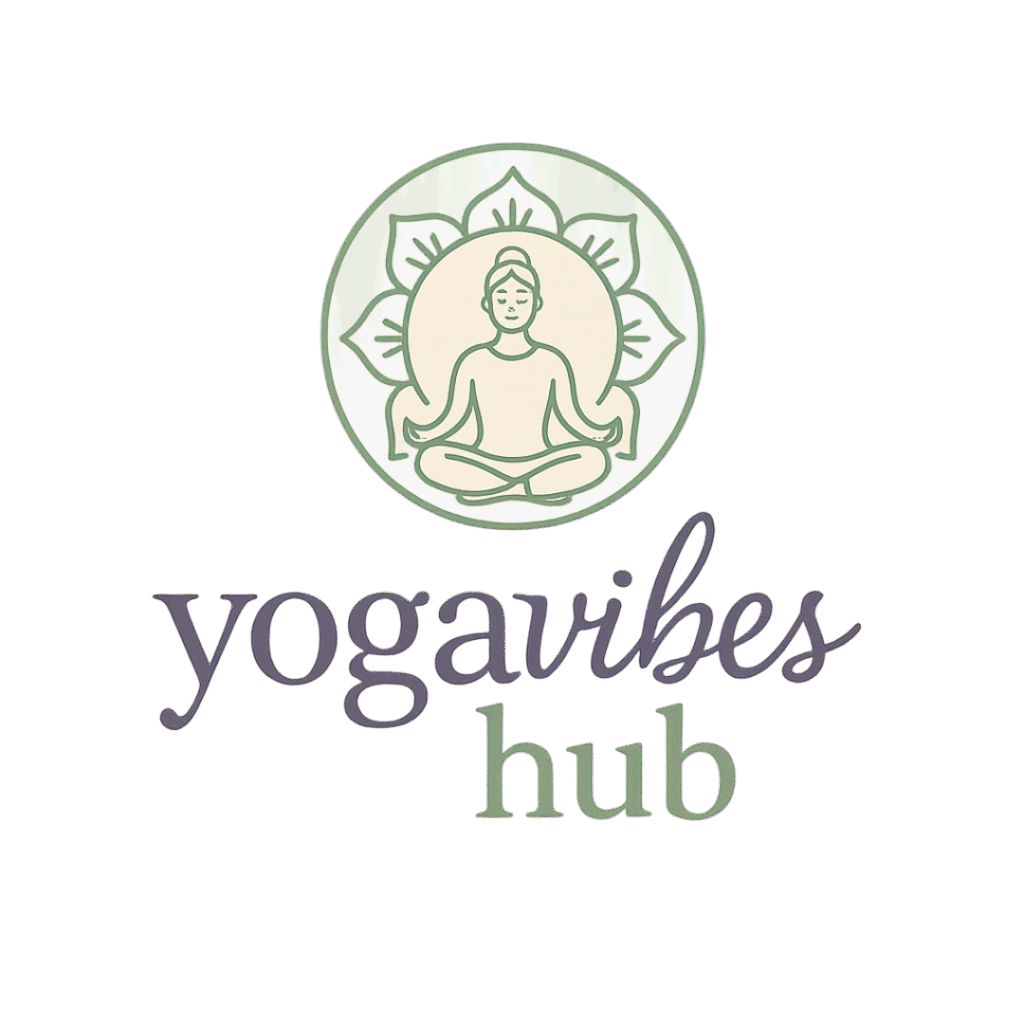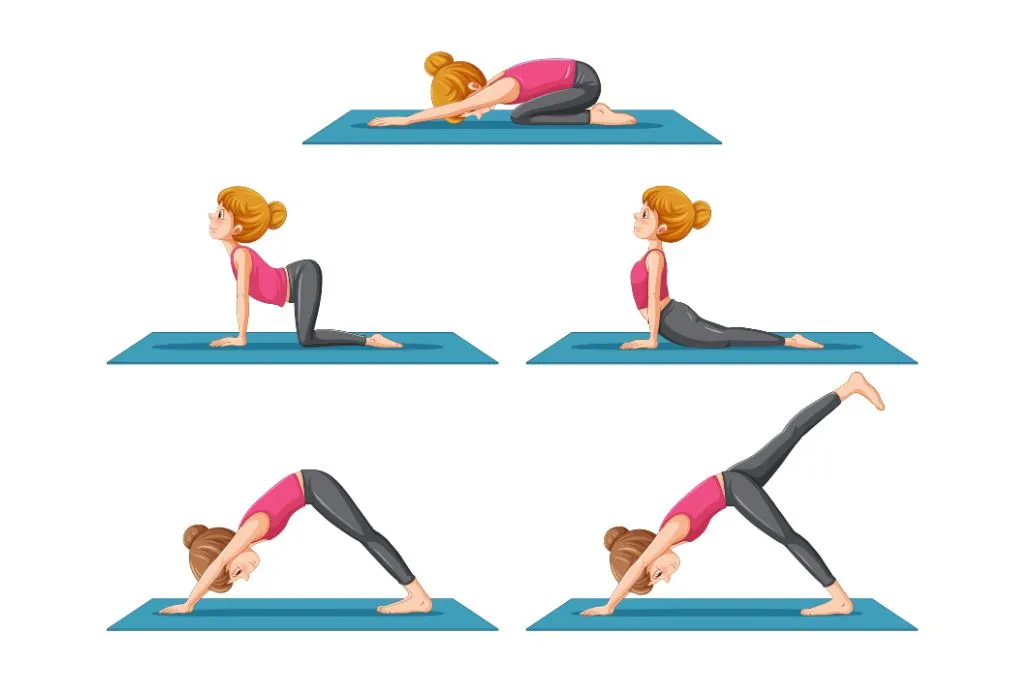Table of Contents
ToggleIntroduction: Your Gentle Path to Wellness
Starting a yoga practice can feel daunting, but you don’t need a studio membership or fancy props to begin. With this guide to Simple Yoga Poses for Beginners, you’ll discover easy yoga poses at home, basic yoga stretches for beginners, and beginner-friendly yoga exercises that require just your body, a mat, and a willingness to breathe deeply. Whether you’re looking for a short introductory yoga routine after work or simple yoga for daily practice, these step-by-step yoga for Beginners instructions will set a solid foundation for lasting habit and well-being.
Why Choose a Home Practice?
Practicing Simple Yoga Poses for Beginners at home offers unique advantages:
- Accessibility: No memberships or complicated equipment—just you and a comfortable space.
- Flexibility: Fit a 10–15 minute Simple Yoga Poses for Beginners into any schedule.
- Low-Impact: Gentle yoga for flexibility that gradually builds strength without stressing joints.
- Confidence Building: Master yoga postures for new learners at your own pace, free from comparison or judgment.
Benefits of Yoga for Complete Beginners
A regular routine of Simple Yoga Poses for Beginners can transform both body and mind:
- Improved Flexibility & Mobility: Gentle stretches loosen tight muscles and increase range of motion.
- Increased Strength: To increase endurance, poses like warrior and plank work the limbs and core.
- Stress Reduction: Mindful breathing techniques calm the nervous system and lower cortisol.
- Enhanced Posture: Spinal alignment and supportive muscle work help counteract daily slouching.
- Mental Clarity: Meditation and focus on breath sharpen attention and reduce “mental fog.”
- Joint Health & Balance: Especially beneficial for injury prevention and healthy aging.
Yoga Poses to Start With: The Basic Six
Hold each pose for 5–8 breaths, breathing evenly and focusing on form.
- Mountain Pose (Tadasana)
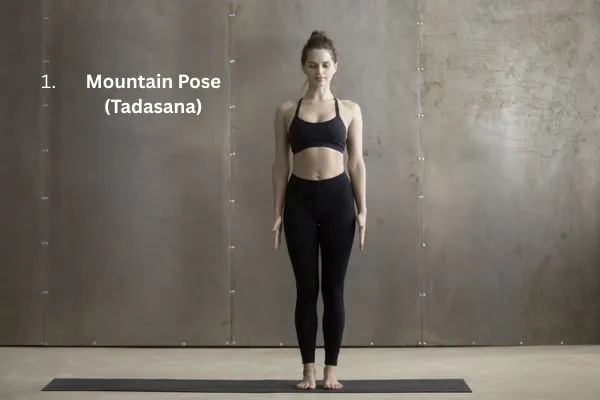
Targets: Posture, grounding, alignment
- How to: Stand feet hip-width apart, arms at sides, palms facing forward. Engage thighs, draw tailbone down, and lift through the crown of your head.
- Tip: Imagine a string pulling you upward from the top of your head, keeping shoulders relaxed.
- Downward-Facing Dog (Adho Mukha Svanasana)
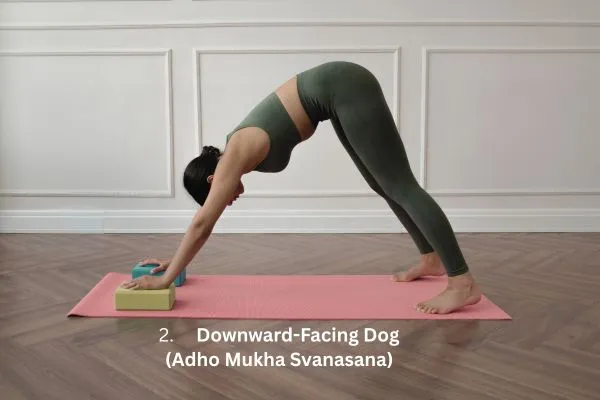
Targets: Hamstrings, calves, shoulders, back
- How to: Form an inverted “V” with your hands and knees, tuck your toes, and raise your hips. Spread your fingers wide and push through your palms.
- Tip: Keep knees slightly bent if hamstrings feel tight; gradually work toward straightening legs.
- Warrior I (Virabhadrasana I)
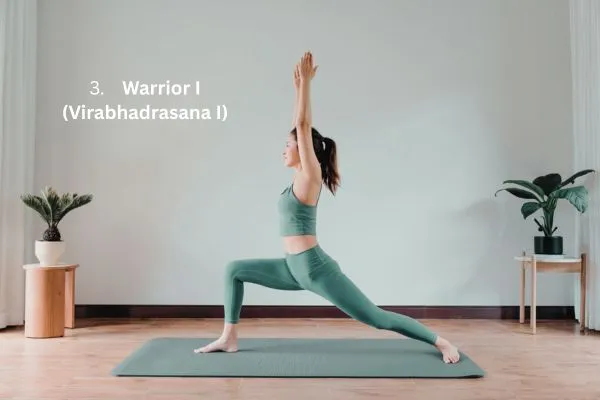
Targets: Legs, hips, chest opening
- How to: Step right foot forward, bend front knee over ankle, align back foot at a 45° angle. Raise arms overhead, palms facing each other.
- Tip: Square your hips forward and keep the spine long, avoiding collapsing into the front knee.
- Child’s Pose (Balasana)
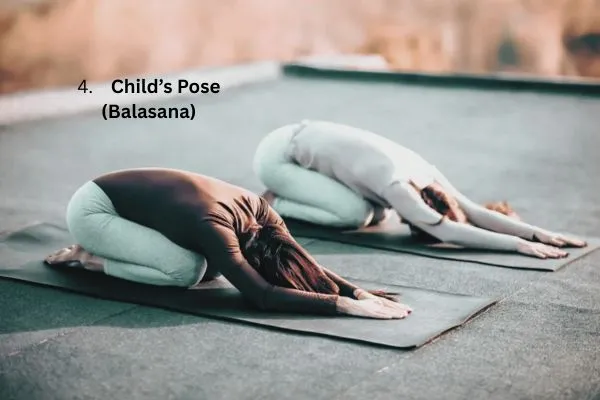
Targets: Lower back, hips, relaxation
- How to: Sit back on heels, fold torso forward, stretch arms in front or rest alongside the body. Rest forehead on the mat.
- Tip: If your hips or lower back feel tight, place a pillow or rolled blanket beneath your chest for more comfort.
- Cat–Cow Stretch (Marjaryasana–Bitilasana)
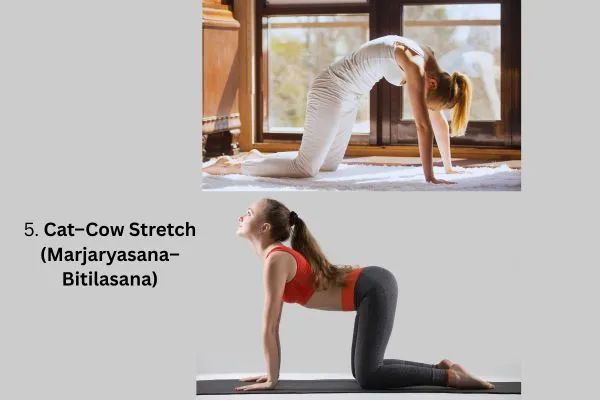
Targets: Spine flexibility, neck, core activation
- How to: On hands and knees, inhale arching spine (Cow), exhale rounding spine (Cat). Synchronize each movement with your breath.
- Tip: Gaze softly between your hands in Cow, and draw chin to chest in Cat for maximum spinal articulation.
- Bridge Pose (Setu Bandha Sarvangasana)
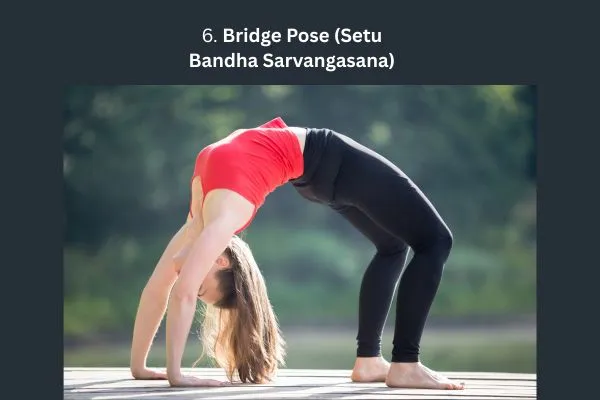
Targets: Glutes, lower back, chest opening
- How to: Lie on back, bend knees with feet hip-width apart. Press feet and arms into mat to lift hips. Clasp hands under body or keep arms by sides.
- Tip: Avoid overarching the low back—lift through glutes and lengthen through the spine.
Common Mistakes Beginners Make & How to Avoid Them
| Mistake | Correction |
| Holding the breath | Stay aware of continuous, deep breathing |
| Pushing too hard into poses | Ease into positions, use props |
| Comparing with others | Focus on your own journey |
| Skipping warm-ups or cool-downs | Always prepare and restore the body |
| Inconsistent practice | Set a realistic schedule—3 times/week is ideal |
Safety & Modifications
- Pay Attention to Your Body: You can tolerate mild discomfort, but not severe pain.
- Warm Up First: Begin with gentle movements before deeper stretches.
- Use Props: Blocks, straps, and cushions can support alignment and prevent strain.
- Build Gradually: Increase hold times and intensity over days and weeks, not hours.
Tips for Staying Consistent
- Set Small Daily Goals: Even 10 minutes daily of Simple Yoga Poses for Beginners trumps sporadic long sessions.
- Track Your Progress: Log dates, poses completed, and how you feel afterward.
- Join a Community: Online classes or social groups keep motivation high.
- Reward Yourself: Treat yourself to a smoothie or warm bath after practice to reinforce the habit.
Yoga Styles Best Suited for New Learners
- Hatha Yoga: Slow-paced, focuses on alignment and breath awareness.
- Vinyasa Yoga: Dynamic flow linking breath and movement for improved coordination.
- Yin Yoga: Passive, long-held stretches targeting deep connective tissues.
- Restorative Yoga: Fully supported poses for deep relaxation and recovery.
Conclusion: Begin Your Journey Today
Begin Your Journey Today By following these step-by-step Simple Yoga Poses for Beginners guidelines and incorporating yoga postures for new learners, you’ll cultivate strength, flexibility, and inner calm. Remember, the key to transformation is consistency—practice your introductory yoga routine daily, honor your body’s limits, and breathe mindfully. Your path to wellness starts now: unroll your mat, take a deep breath, and dive into these Simple Yoga Poses for Beginners.
